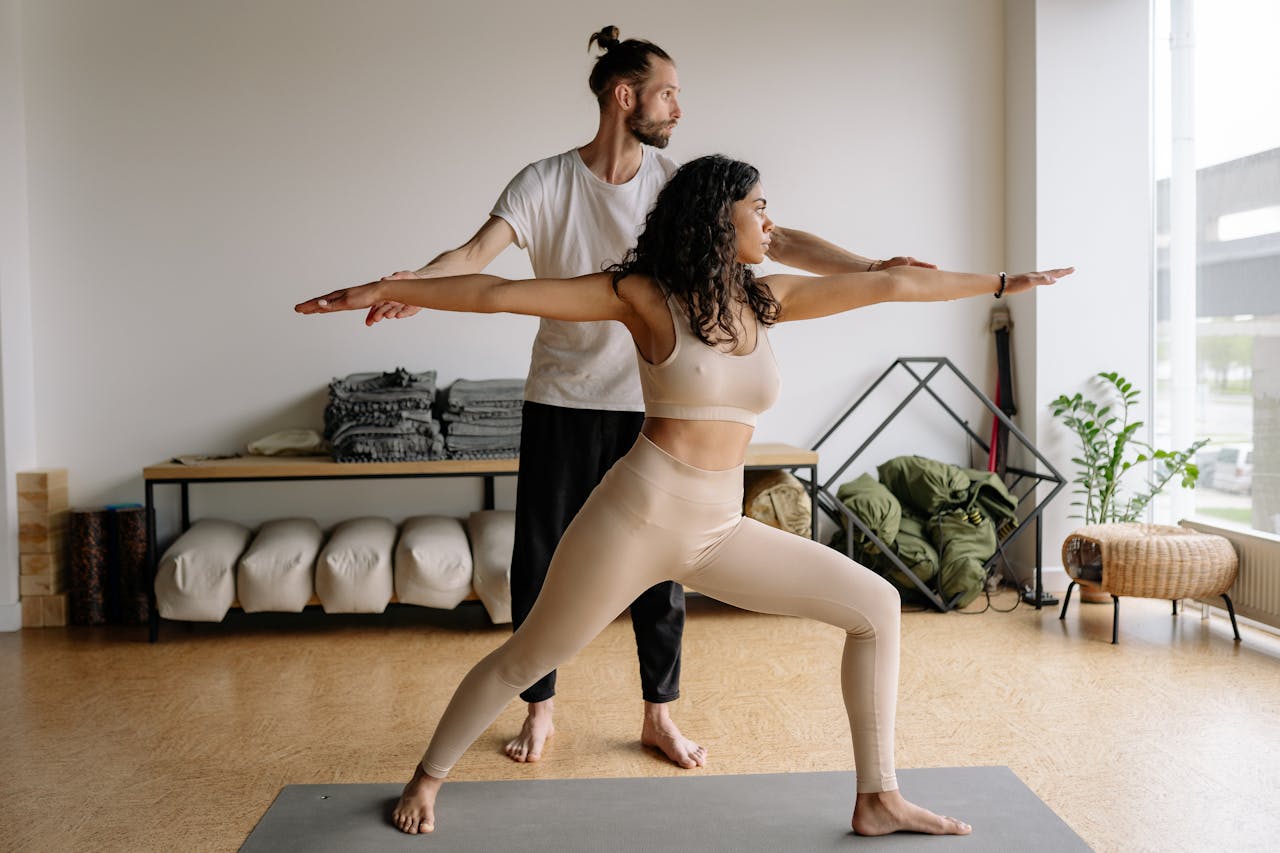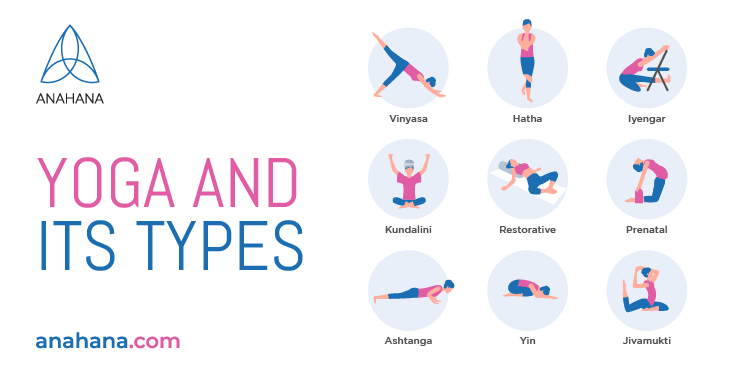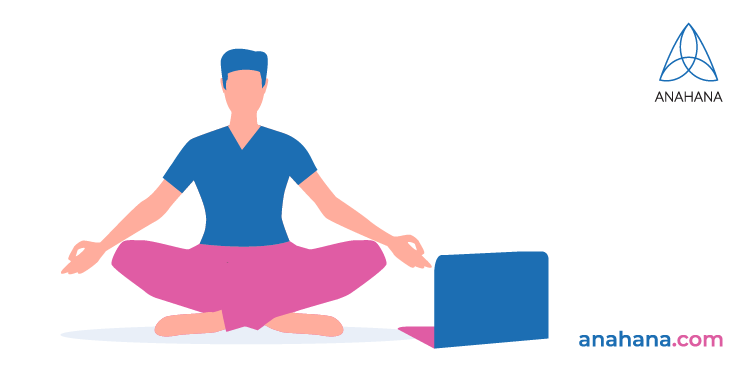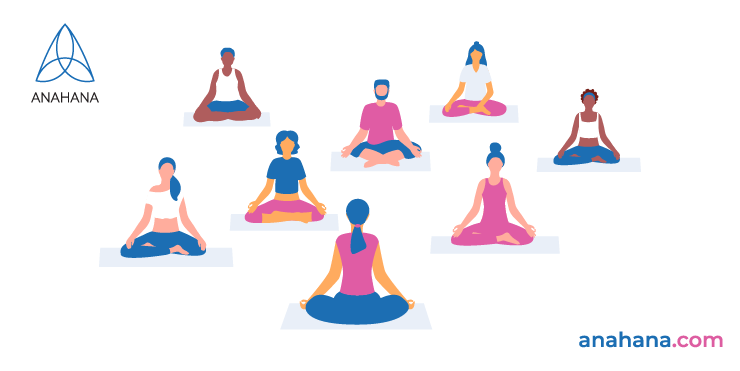
Table of Contents
Are you interested in becoming a yoga teacher but unsure where to start? Or are you interested in the intensive aspects of yoga teacher training (YTT) and are looking for a comprehensive experience rather than the actual certification? Either way, you have come to the right place. Allow us at Anahana to teach you the basics of YTT and what you should know before getting started.
Key Takeaways
- Choosing a Yoga Style: It's important to select a yoga style that aligns with your interests before starting training.
- Training Structure: A 200-hour training is a foundational step, but continuous learning is essential.
- Personal Growth: Expect mental, physical, and emotional growth, including overcoming fears and finding confidence.
- Physical Challenge: The training involves intense physical exertion and endurance.
- Lifestyle Impact: Your daily habits and priorities may shift towards wellness.
- Cost Variation: Training costs range widely depending on location, duration, and style.
What Type Of Yoga Is Right For Me?
 Before registering for any teacher training program, you should ask yourself, “what type of yoga is right for me?”. Selecting the style you want to teach is vital to finding an appropriate yoga instructor course. Trying out different types, either in a studio or online, will help you better understand the options to choose what you enjoy the most.
Before registering for any teacher training program, you should ask yourself, “what type of yoga is right for me?”. Selecting the style you want to teach is vital to finding an appropriate yoga instructor course. Trying out different types, either in a studio or online, will help you better understand the options to choose what you enjoy the most.
Some common styles that you should try out include:
Vinyasa yoga: The movements in Vinyasa yoga are coordinated with your breath and flow from one posture to the next. This is an athletic style of yoga.
Hatha yoga: These classes are suitable for beginners. It is slower-paced than other styles of yoga and provides a classic approach to breathing and exercise.
Iyengar Yoga: This style focuses on alignment and precision during the movements. Yoga postures will be held for long periods and will utilize props to help you get deeper into each pose.
Kundalini yoga: Kundalini yoga is equally physical as it is spiritual. You will work your core and breath control during fast-moving poses and exercises. Classes involve spiritual aspects, including chanting, mantra, and meditation.
Restorative yoga: This style will have you spend long periods in fewer physical postures. It calms the mind and body and allows you to relax deeply and let go of any stress.
Other styles of yoga you may wish to include as you explore new styles:
- Bikram yoga
- Yin yoga
- Ashtanga yoga
- Jivamukti yoga
- Hot yoga
- Prenatal yoga
- Pranayama yoga
What To Expect From Yoga Teacher Training
 There are several things you can expect to experience and gain from yoga teacher training. Although all programs are different, there are certain similarities in the benefits you will endure through your YTT experience.
There are several things you can expect to experience and gain from yoga teacher training. Although all programs are different, there are certain similarities in the benefits you will endure through your YTT experience.
1. You will find your inner voice
You will be challenged and asked to speak aloud in front of your classmates frequently, forcing you to find a new sense of confidence. In addition, you will lead your classmates through a yoga practice. This will push you out of your comfort zone and contribute to your personal development.
2. The 200-hour training is only the beginning
The 200-hour YTT might seem like a big commitment now. But just know, it is only the beginning. It will be a stepping stone into the world of yoga studies, and as a yoga teacher, it is up to you to continue learning. During the 200-hour YTT, you will discover only the surface of the practice and need to continue to commit yourself to your education.
3. You will push your body
YTT involves vigorous and frequent exercise. Sometimes this will consist of up to 10 hours straight of physical activity. Your body will be sore, but it is rewarding to see your endurance and growth as you push your body to keep going.
4. You will break through barriers of fear
During YTT, you will not have the option to shy away from and avoid new experiences. You will be forced to try new things and learn to conquer the barrier of fear, embracing new experiences.
5. You will feel overwhelmed
During your experience, you will feel mentally and physically overwhelmed at times. This is normal. Rather than focusing on the end, try to enjoy the process and commit yourself to the experience. This will help you avoid feeling overwhelmed and even defeated.
6. Your priorities will change
YTT teaches you how to be a teacher and embrace yoga as a lifestyle. Taking part in YTT will be a practice of general wellness and influence how you decide to do daily activities, including eating, drinking, exercising, and shopping. This change will contribute to your personal growth. In addition, subjects you speak about with others, such as gossiping, will become less attractive to you.
7. You will find new friends
As your priorities change, you may realize you have outgrown some of your friends. As you begin to distance yourself from certain people in your life, you will likely start to find new friends with interests that more closely match yours.
8. There will be some strange exercises
As you break barriers of fear, you will be asked to do some strange things. These may include screaming at the top of your lungs or sitting across from one another, staring into each other’s eyes, and repeating a statement. Just remember to go into the exercises with an open mind so you can reap the benefits that will follow.
Online Teacher Training
The Covid-19 pandemic has shifted some yoga studios from in-studio learning to online education. Because of this, YTT is more accessible than it has ever been before. Numerous well-regarded yoga schools, teachers, and programs have shifted to an online platform that offers 200-hour YTT online. This has made yoga training more accessible to everyone around the world. Yoga Alliance approved the online learning platform in 2020, and you can now complete your entire YTT online. In addition, it is often more affordable and allows you to study under world-renowned yoga instructors.
What Does Yoga Teacher Training Cost?
The cost of yoga teacher training will vary depending on the course. It depends on the level of certification, length of the program, location, and many other factors. However, you can spend anywhere from $200 to $7000 on YTT. A 200-hour program is generally between $1000 to $3000 and runs for three to four weeks. Yoga Alliance registered schools are often cheaper and can cost half the Bikram teacher training programs.
If you are interested in going abroad for your studies, it could increase the price. Some places are notoriously expensive, including Costa Rica and Bali, but it is possible to find affordable programs. Certain countries have more luxurious and westernized programs than other places, including India. India is the most affordable location abroad to take your YTT and can cost under $1000. In addition, it is the birthplace of yoga, putting you in the heart of the practice. Other affordable countries include Nepal and Thailand. Generally, $3000 or more courses are in exotic locations with world-renowned instructors, gourmet meals, luxurious accommodations, and students worldwide. You can find these in Thailand, Bali, Europe, and minimally in the US and Canada.
Certificates in certain styles of yoga are more expensive than others, including Jivamukti yoga and core power yoga. Other styles are less expensive, including Yoga Nidra and acro yoga. If you are interested in hatha yoga and vinyasa yoga, two of the most popular yoga styles, then you will be able to find an affordable program. These styles serve as a foundation for yoga. Due to their popularity, there are many options in different locations and price ranges.
How Yoga Teacher Training Changes You
Many people who take a YTT course are transformed into a new, more profound version of themselves. Working with people worldwide and meeting both the mental and physical demands of training is a life-altering experience. Your life, perspective, and attitude will change. As you complete exercises that get you in touch with yourself, you will better understand who you are. YTT teaches you what it means to embrace yoga as a lifestyle and carry mindfulness with you every day.
Yoga Teacher Insurance
Once you are a yoga alliance certified instructor, purchasing yoga teacher insurance is the next step. Many yoga studios require their teachers to obtain this themselves. Although some studios have general liability insurance, this often does not extend to their teachers. Teaching yoga does have its risks, just like any physical training. It can make you liable for injuries that occur during your instruction. Whether you teach part-time at a rec center or own your yoga studio, obtaining yoga teacher insurance is essential if you wish to teach yoga.
It would help if you determined which insurance is better suited for you. General liability insurance will protect you against third-party claims for injury or property damage, such as a mirror falling and a piece of glass injuring a student. On the other hand, professional liability insurance will protect you against any claims that your instruction, such as posture correction, resulted in an injury. As a yoga instructor, professional liability insurance is likely the appropriate option. A combined package with general liability insurance and professional liability insurance is roughly $330 per year.
Frequently Asked Questions
 Is yoga teacher training worth it?
Is yoga teacher training worth it?
The answer to this question depends on whether you aspire to take your journey with yoga and wellness to the next level. Whether you want to be a yoga teacher or not should be only one factor in your decision-making process. Going through the process of YTT with others is an extraordinarily gratifying and life-changing experience. It will teach you not only about physical practice but also about the yoga lifestyle. This will help you learn how to be a better person, handle good and bad situations, make the most out of life, and embrace all given to you. This can increase your quality of life and live a more fulfilling lifestyle.
During the training process, you will make new friends, be challenged, and address and connect past parts of your life, helping you let go of the past and embrace the present. If you are interested in learning, growing, and becoming a better person, it is 100% worth it. In addition, if you aspire to become a yoga teacher, it is also worth it. You will boost your practice physically, spiritually, and even emotionally.
How long should you practice yoga before teacher training?
You do not need years of experience on the mat. However, a certain amount of experience practicing yoga will help you benefit from the experience. A minimum of three months of frequent personal practice will prepare your mind and body for the transformational journey. Learning asana in advance will help you reap the benefits of taking your yoga certification. In addition, if you have a history of experience in related fitness or another type of training, this may work to your advantage.
If you are hoping to register for Ashtanga or a Vinyasa flow course, it would be helpful to take these classes before partaking in the study. However, even beginners can do yoga teacher training, and you will not require extensive training for an introductory course.
Is online yoga teacher training worth it?
Whether you do a retreat or online training depends entirely on your lifestyle and what you are looking to get out of the course. If you have a busy life and don’t have time to go away, online YTT may be best suited. With this flexibility, you can hop onto calls at any location and in any attire. You can even listen to calls during a commute to work or while taking care of your toddler. You will still get many of the fantastic benefits of YTT. However, it will fit into your daily life rather than going away.
What is 200-hour yoga teacher training?
During yoga teacher interviews at studios, one of the first things you may be asked is, have you completed a 200-hour yoga teacher training program? This is because this is the most basic YTT course to become a certified instructor. It shows that you have learned the basics of yoga anatomy & physiology, meditation techniques, asana practice, pranayama, yoga philosophy, and teaching methodology.
If you are taking YTT for teaching yoga in a studio, it is recommended that you have this certification for credibility. However, suppose you want to take the course purely for the experience. In that case, there may be another program better suited for you.
What is 500-hour yoga teacher training?
A 200-hour YTT means that you have completed the standards for being a registered yoga teacher (RYT). RYT 500 means that you have gone above and beyond the minimum requirements. You will complete 300 additional hours of advanced yoga training beyond the minimum standards with this certification.
What is the difference between RYT and ERYT?
RYT (registered yoga teacher) means you are yoga alliance certified and registered. ERYT (experienced registered yoga teacher) implies that the teacher has logged several teaching hours after obtaining their certification. At the 200-hour level, E-RYT means the teacher has logged over 1000 hours of teaching and two years of experience.
References
Yoga Teacher Training 2022 | 200 Hour Yoga course Certification.
Best Yoga Teacher Training Programs for 2022.
Considering Yoga Teacher Training? Here's What to Expect.
A Cheat Sheet to Yoga Teacher Training Costs (and affordable YTTs).
Survive Yoga Teacher Training: How to Prepare.
How to Become a Certified Yoga Instructor.
The Truth About a 200-Hour Yoga Teacher Training (The Stuff They Don't Tell You).
Yoga Teacher Designations | Yoga Alliance.
Disclaimer
The contents of this article are provided for informational purposes only and are not intended to substitute for professional medical advice, diagnosis, or treatment. It is always recommended to consult with a qualified healthcare provider before making any health-related changes or if you have any questions or concerns about your health. Anahana is not liable for any errors, omissions, or consequences that may occur from using the information provided.

By: Anahana
The Anahana team of researchers, writers, topic experts, and computer scientists come together worldwide to create educational and practical wellbeing articles, courses, and technology. Experienced professionals in mental and physical health, meditation, yoga, pilates, and many other fields collaborate to make complex topics easy to understand.
